Review of Soviet lenses
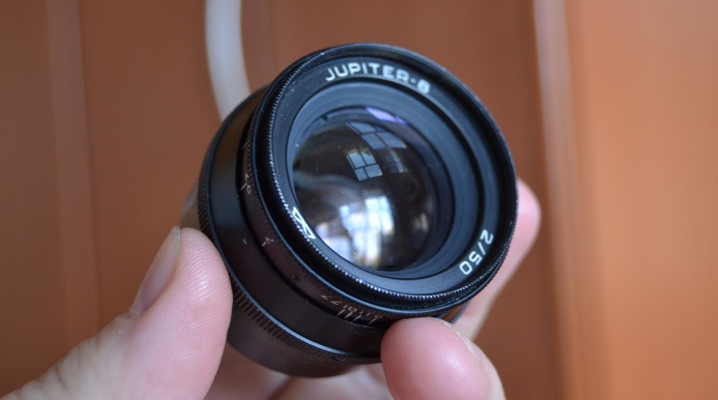
An interesting phenomenon is observed today: the demand for Soviet optics, such as photographic and telephoto lenses produced in the USSR, is growing day by day. And not only among collectors of rare devices, but also among ordinary amateur photographers. What is the reason for such popularity of Soviet lenses and is it really possible to use such optics in our time - this article will help answer these questions.

Peculiarities
For many, it still remains unclear why photographic lenses are needed at all, when there is a huge variety of smartphones with cameras capable of taking color photographs with great clarity and rich colors. but Not everyone understands that the presence of such smartphones, as well as the most modern photographic equipment, does not make a person a photographer, but only the owner of these devices.
The literal translation of the word "photography" is drawing with light, and drawing is art. Images obtained with Soviet lenses differ in flexibility and volume, they convey mood and have their own recognizable style. Of course, this optics reveals its full potential only with real photographers.
Nevertheless, it is the Soviet lenses that are distinguished by their excellent quality. Made in the middle of the last century, they have retained their original properties and still serve their owners excellently.


Lenses of Soviet lenses were made of the highest quality glass, and their frames were made of high-quality metal, without plastic, which is the basis of most modern technology.
Soviet lenses are quite affordable. Modern budget models, which are installed on amateur cameras, are much inferior in quality to professional lenses, so many return to the old, in particular Soviet, optics.
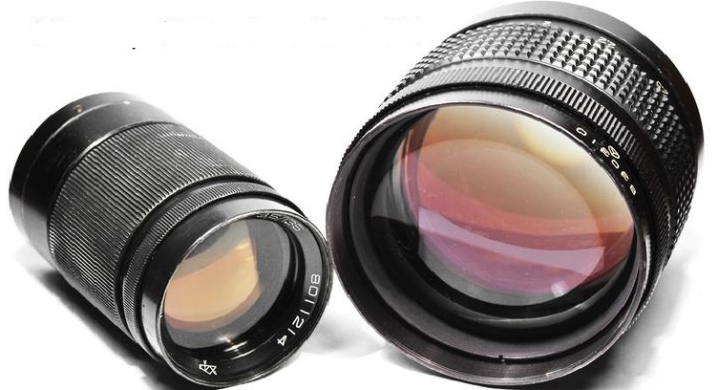
Soviet lenses are devoid of electronics, they do not have autofocus.
All such optics are manual, that is, the photographer will have to manually set the settings. But with its help, a real master will be able to create a truly artistic image that will bear the imprint of his feelings and mood.
Another feature of Soviet optics is a fixed focal length, which is why such lenses have a high aperture ratio. Fixes constituted the absolute majority among photographic lenses of that time, nevertheless, zoom lenses were also produced in the USSR - a type of optics designed in such a way as to be able to change the distance from the center of the lens to the sensor.
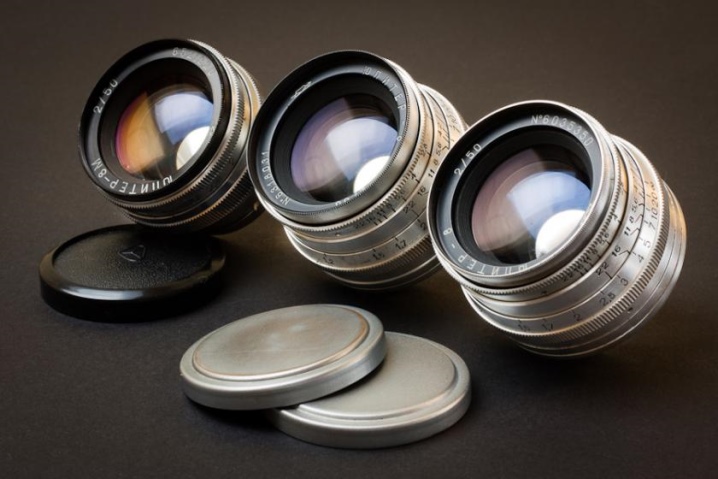
It cannot be said unequivocally that Soviet optics is in many ways superior to modern optics. Professional lenses from leading modern brands have a set of useful parameters, while their manufacturers are constantly developing new materials and optical elements for their products.
Optics produced during the Soviet era are no better in many respects, but also no worse than good modern ones., while it has a more affordable price, for which the amateur photographer receives excellent bonuses: high-quality assembly, glass and metal, as well as time-tested optical circuits.
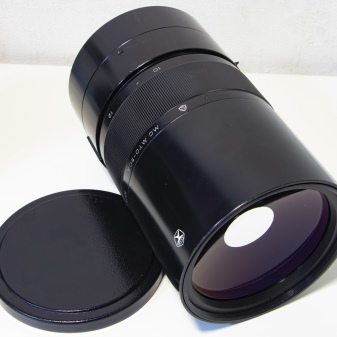
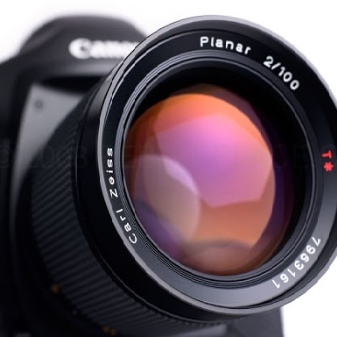
Review of the best manufacturers
The Soviet Union produced cameras and lenses that varied significantly in build quality. The best Soviet optics was not inferior to foreign ones, receiving major awards at international competitions.The quality of the lenses depended on the manufacturer. The production of photographic lenses was divided into mass production and for special needs, by special order.
In mass production, there were such lenses as "Helios", "Industar", "Treplet" and other optical equipment that anyone could buy for a penny and independently engage in photography, film development and printing images.
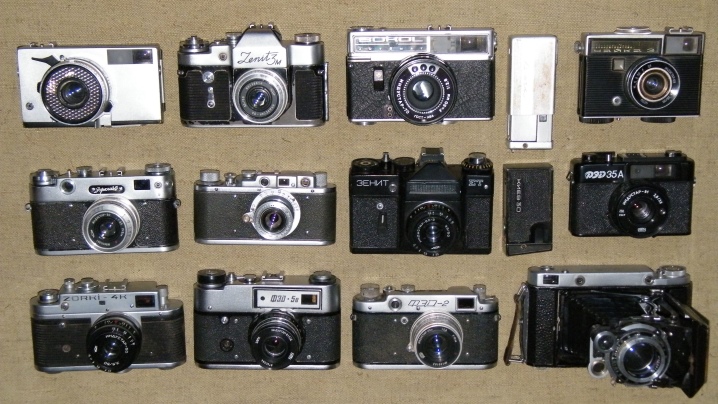
Those lenses, in the production of which the emphasis was placed not on quantity, but on quality, were not sold everywhere and were already priced differently. For example, an improved version of the Jupiter 37A lens cost 120 Soviet rubles, and the most expensive photographic lenses cost 2-3 times more.
Depending on the type of lens attachment to the camera, all Soviet optics are divided into several types. M42 and M39 adapters were the most widespread in their time. With the help of such adapter rings, it becomes possible to attach a lens from a device with a different type of mount to the camera.
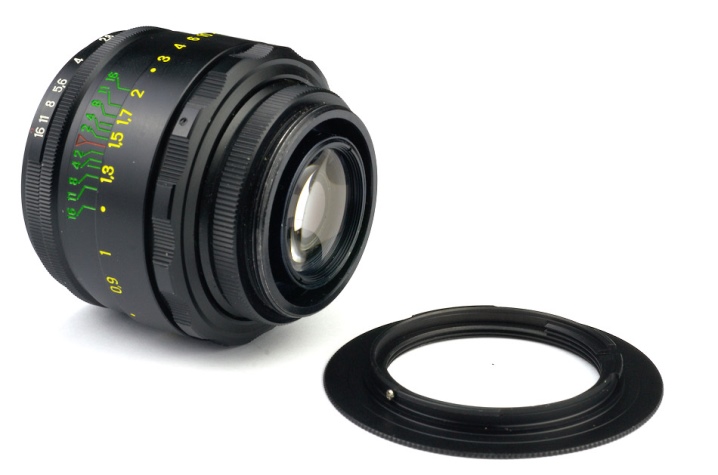
The M42 thread is the standard mount for Soviet-era SLR cameras. The largest number of Soviet cameras and lenses was produced with this thread, and nowadays adapters are produced for all modern system cameras.
As already mentioned, fixed focal length optics are faster than zooms. The most popular lenses are available in 35mm, 50mm, 85mm and 100/105mm focal lengths.
Lenses with a focal length of 200 mm, as well as 14 and 24 mm are less popular among amateur photographers due to their high cost and too specific parameters.

Let's take a look at the top of the most popular lenses of the last century, released in the USSR.
Soviet optics, which has the lowest price today, is "Helios 44-2" with a focal length of up to 58 mm, aperture of 2.0 and the ability to beautifully blur the background. Refers to the so-called soft-drawing optics, it is indispensable in creating portraits due to its ability to make minor skin imperfections invisible. In Soviet times, it was the lens recommended by the manufacturer for some Zenit models.
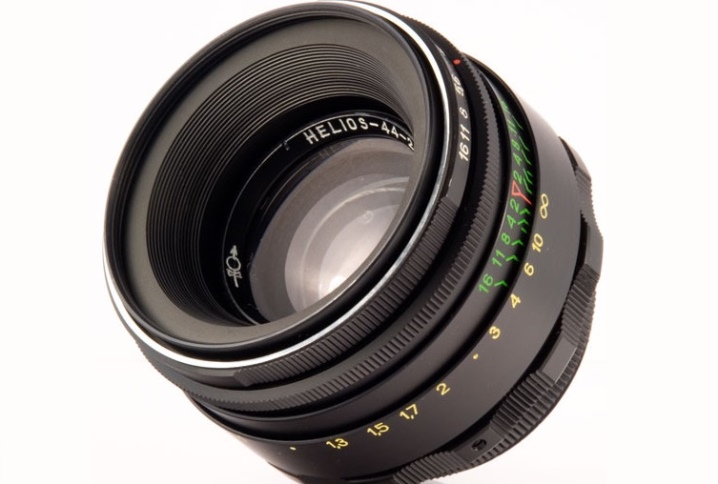
Zenitar-16 has a focal length of 16 mm and an aperture of 2.8. This is a wide-angle lens, otherwise called a fish eye, and is mainly used in landscape or street photography to get a large panoramic view from one point.
The resulting picture has good sharpness and depth.
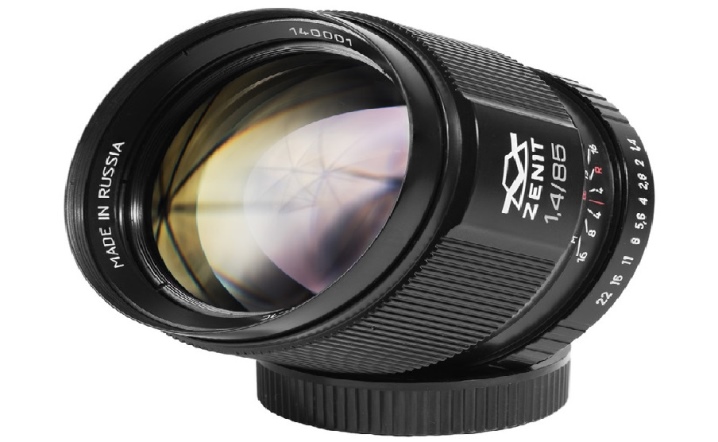
Mir 1B is a lens with a focal length of 35 mm and an aperture of 2.8, which received the Grand Prix at an international exhibition. The image obtained through the use of such optics is very clear and of high quality.
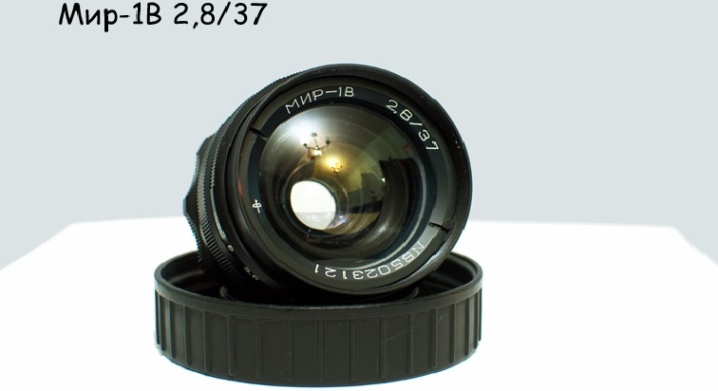
Soviet long-focus portrait lens "Jupiter 37A" 135mm is currently used on some digital cameras as a telephoto lens. Its metal body is highly reliable and durable, allows shooting at temperatures from -15 to +45 degrees Celsius.
A special adapter can be installed on such a lens, which allows you to change its rear part, after which it can be attached to SLR cameras with an M42 thread.
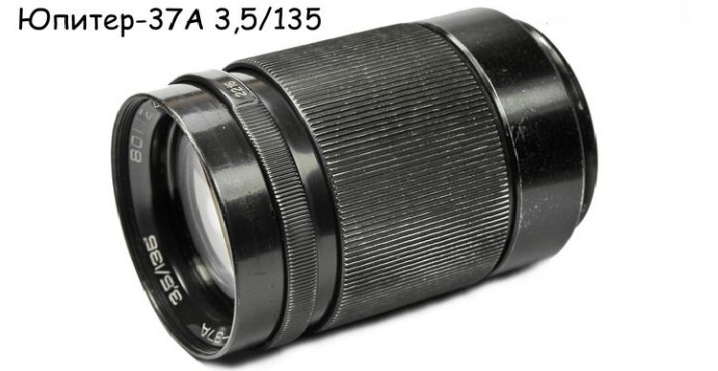
Jupiter-9 is one of the most famous Soviet lenses.used for portraits, it has a focal length of 85 mm and aperture of 2.0. Such optics were produced in two colors - white and black, and white lenses were distinguished by fewer defective products and better performance. The black version gives a more blurred image, so experts advise to give preference to the white varieties of "Jupiter" or those lenses whose names are written in Latin letters - these optics were intended for export abroad.
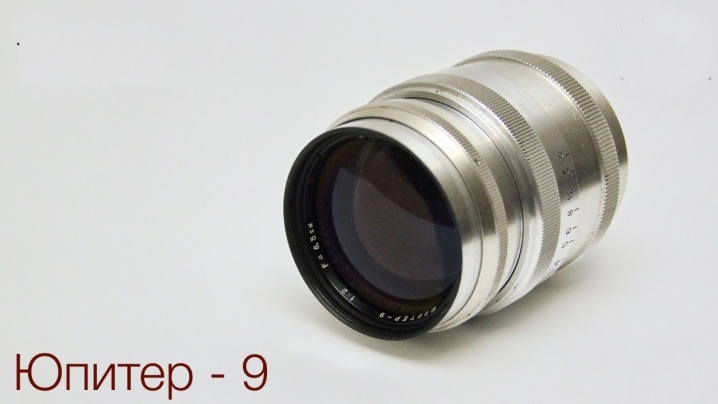
But the most long-focus Soviet lens - "MTO-1000A", the focal length of which is more than 1000 mm, was used for photographing distant objects - in astro photography and photography for birds and animals.
These optics were intended to be interchangeable with small format SLR cameras.
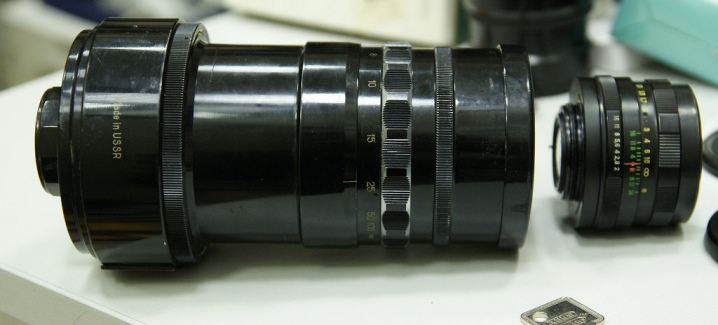
Zoom lenses were used mainly in cinematography and television in order to change the scale of the displayed object without moving. Later, zoom lenses began to be used in photography as interchangeable lenses for single-lens reflex cameras and narrow-film film projectors. Thus, the Soviet zoom lens PF-1 with a range of distances from 15 to 25 mm was specially developed by Soviet engineers for the amateur cinema projector "Kvant".
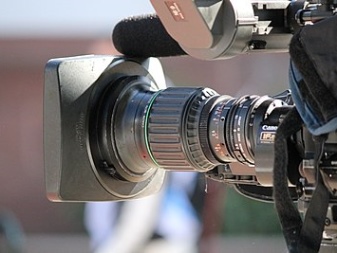
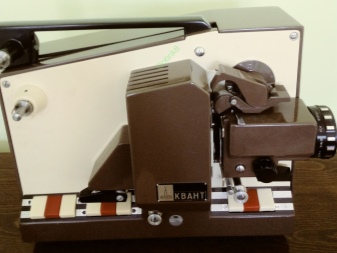
Lenses with M42 thread suitable for video shooting, such manual optics without autofocus can please not only with the image quality, but also with a completely economical price.

Lenses with M39 thread were in use before Russian engineers converted the entire fleet of Russian optics to M42 threads.
Currently, there are adapters for such lenses, so it will not be a problem to install such optics on modern cameras.
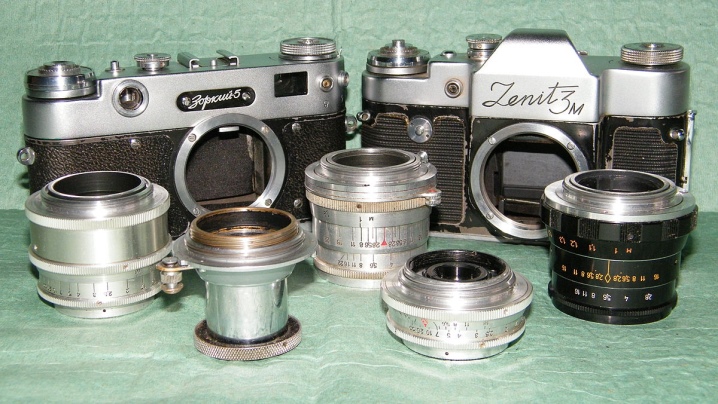
Jupiter-12 - a lens with a focal length of 35 mm and an aperture of 2.8, was considered the most popular wide-angle lens during the Soviet era. Unfortunately, it is not compatible with most modern cameras due to design features.
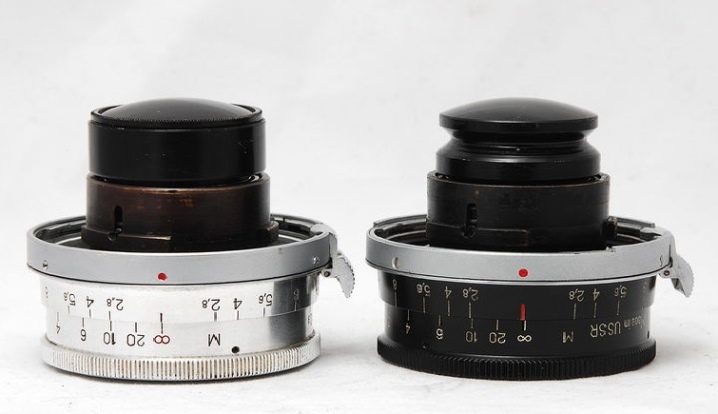
Can it be used in our time?
Experts say that almost any Soviet optics can be installed on modern photographic equipment, you just need to purchase a special adapter. Some old lenses are attached to modern Nikon cameras without any additional adapters or alterations at all., since all Nikons are equipped with a Nikon F mount, which has not been modified in any way since 1961.
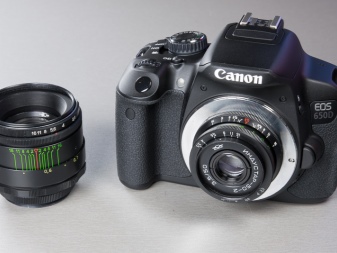
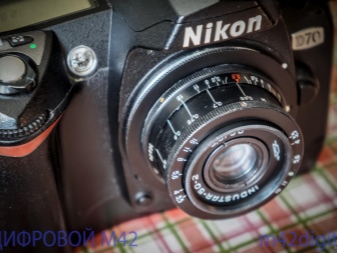
Soviet lenses were of good quality, while their price is much lower than modern counterparts, so amateur photographers often use such optics together with current brands of cameras.
Nevertheless, for professional shooting, specialists prefer to purchase more expensive optical equipment from modern manufacturers.
An overview of Soviet lenses in the video below.













There were cases during the installation of optics of the USSR, when the lens visor clung to the camera mirror and interfered with the work .. with the breakdown of an expensive camera.
The comment was sent successfully.